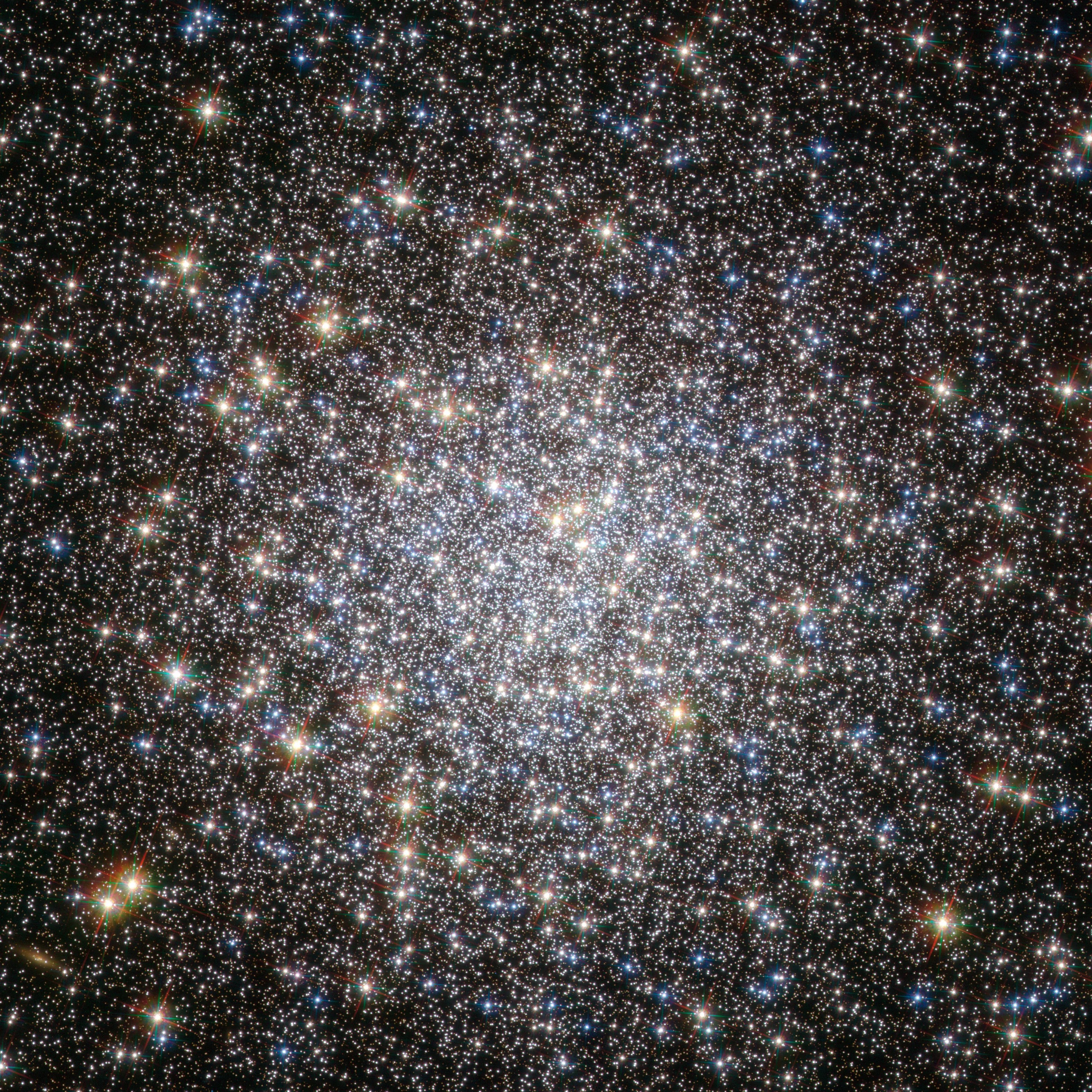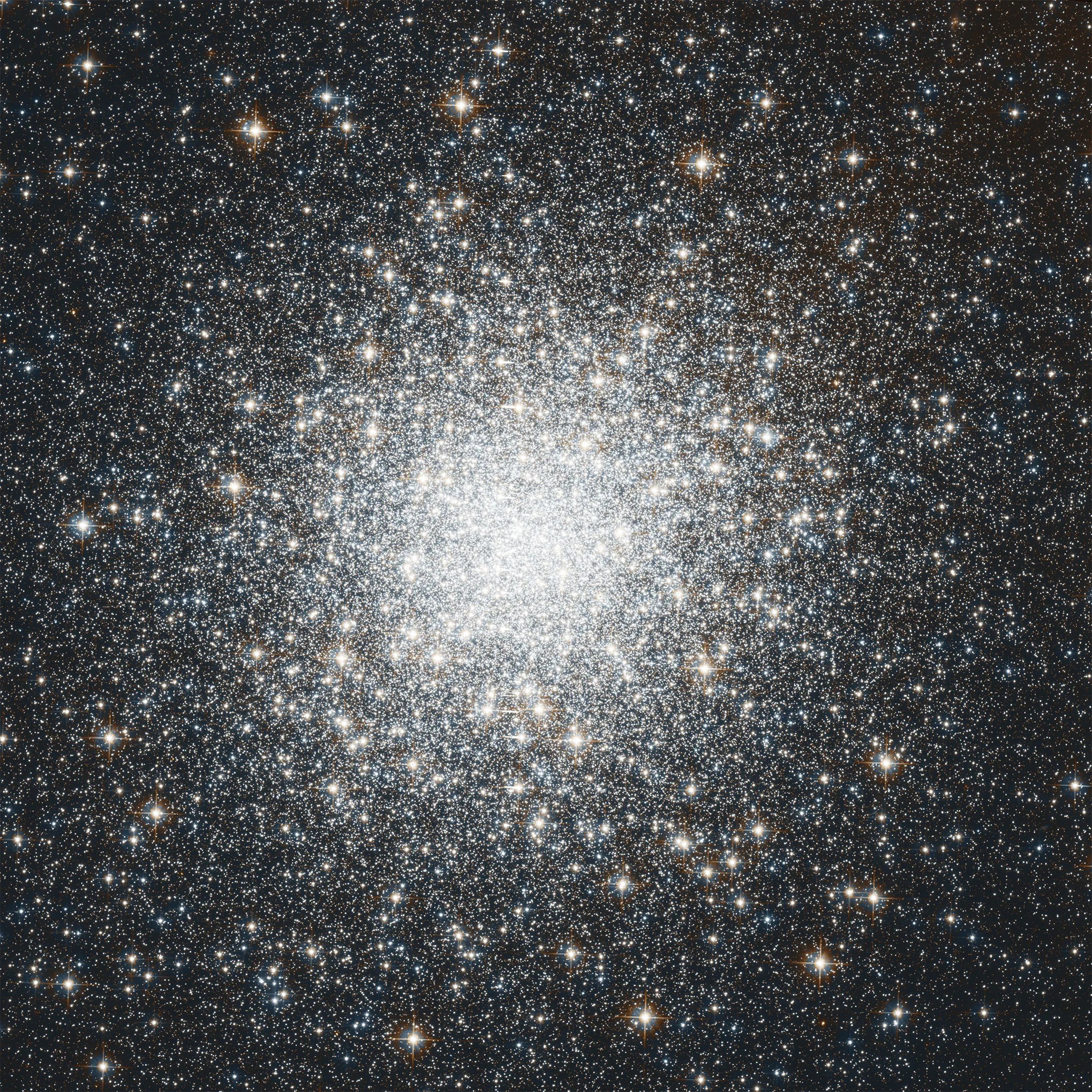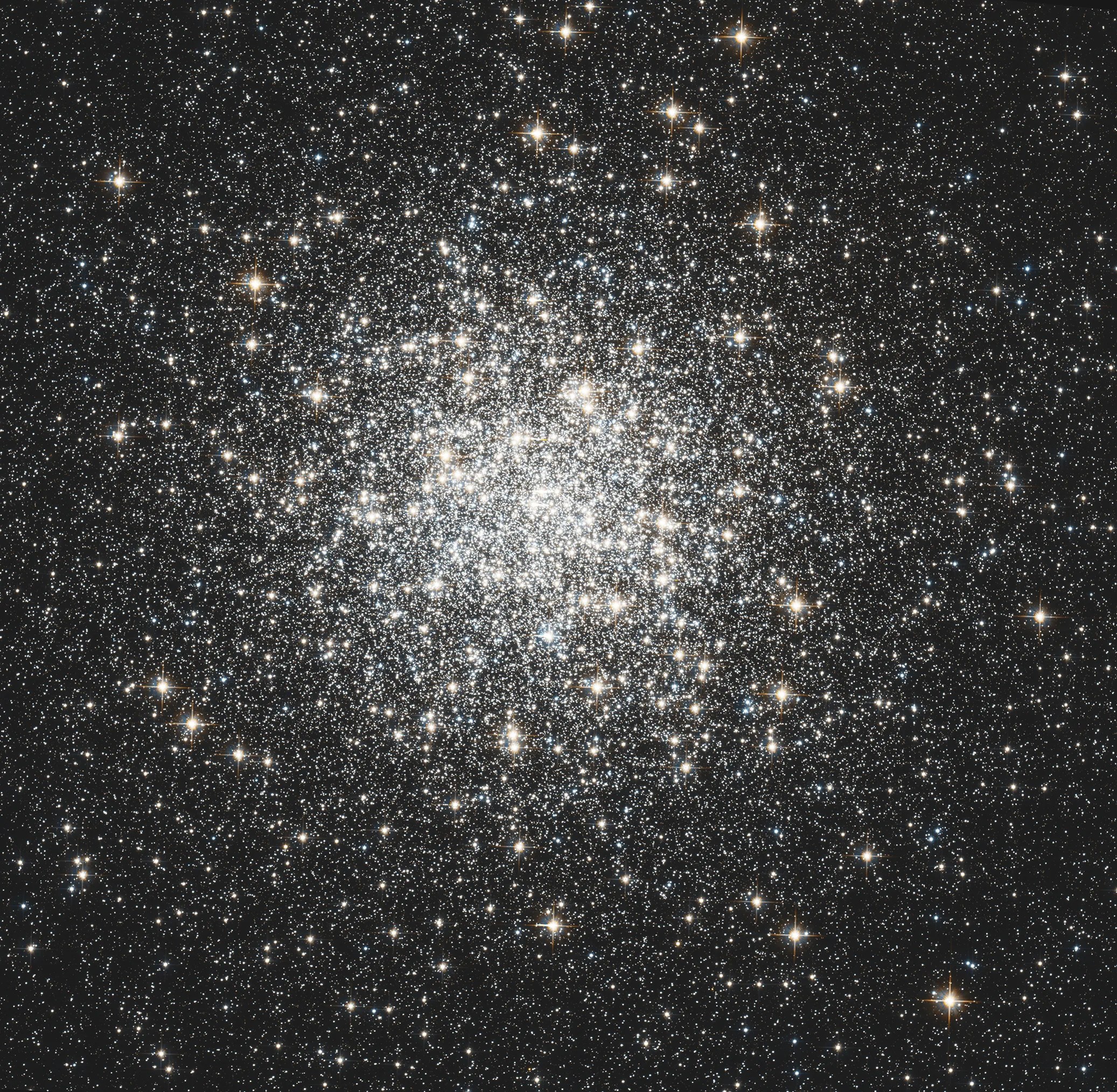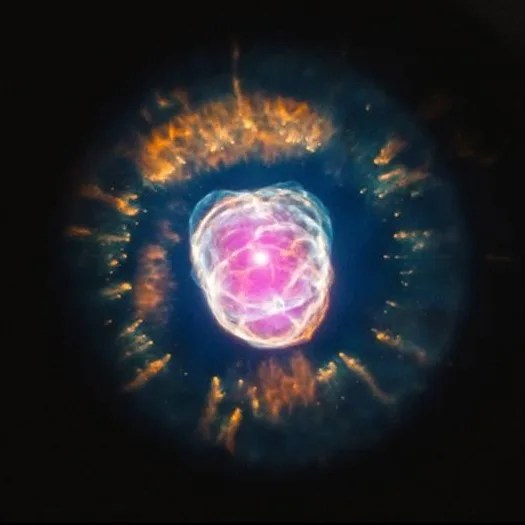Messier 5
Messier 5’s stars formed more than 12 billion years ago.
Distance
25,000 light-years
Apparent Magnitude
6.7
constellation
Serpens
object type
Globular Cluster

Discovered in 1702 by the German astronomer Gottfried Kirch, M5 is one of the oldest globular clusters in the Milky Way galaxy. With an apparent magnitude of 6.7 and a location 25,000 light-years away in the constellation Serpens (The Snake), M5 appears as a patch of light with a pair of binoculars and is best viewed during June.
This image from Hubble captures M5 in stunning detail, resolving the patch of light into individual stars. A composite of exposures taken with visible and infrared cameras, this image features over 100,000 stars. A majority of M5’s stars formed more than 12 billion years ago, but there are some unexpected newcomers on the scene, adding some vitality to this aging population.
Stars in globular clusters are believed to form in the same stellar nursery and grow old together. The most massive stars age quickly, exhausting their fuel supply in less than a million years, and end their lives in spectacular supernova explosions. This process should have left the ancient cluster M5 with only old, low-mass stars, which, as they have aged and cooled, have become red giants, while the oldest stars have evolved even further into blue horizontal branch stars.
Yet astronomers have spotted many young, blue stars amongst the ancient stars in this cluster. Astronomers think that these laggard youngsters, called blue stragglers, were created either by collisions between stars or other stellar interactions. Such events are easy to imagine in densely populated globular clusters, in which up to a few million stars are tightly packed together.
For more information about Hubble’s observations of M5, see:


Explore Hubble's Messier Catalog
The following pages contain some of Hubble’s best images of Messier objects.

Messier 1 (The Crab Nebula)
Better known as the Crab Nebula, Charles Messier originally mistook Messier 1 for Halley’s Comet, which inspired him to create…

Messier 2
Hubble's image of Messier 2 is comprised of visible and infrared wavelengths of light.

Messier 3
Messier 3 holds more than 500,000 stars.




